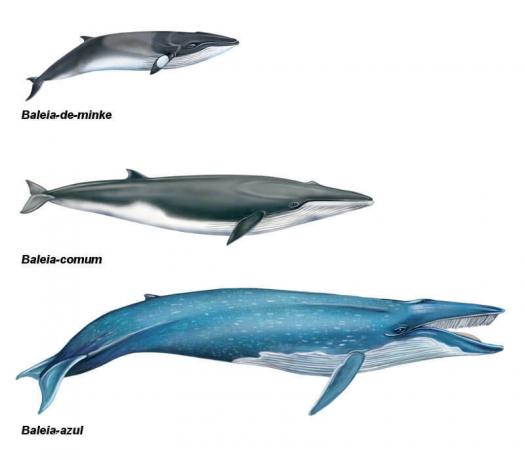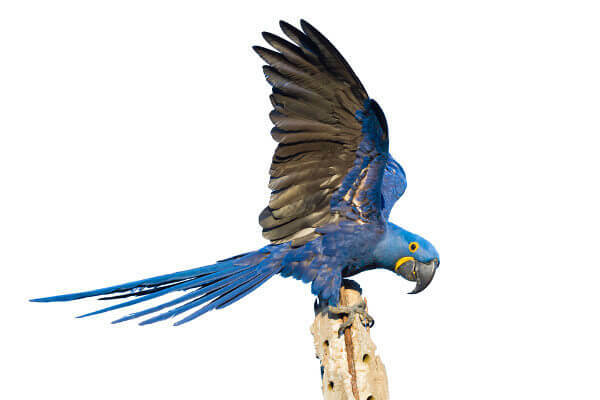Kingdom animalia
Phylum Chordata
Class Mammalia
Order Cetacea
Family Balaenopteridae
Gender Megapter
Species Megaptera novaeangliae
The humpback whale, also known as the humpback whale, can measure approximately fifteen meters in length and weigh up to forty tons. It has large pectoral fins, which can measure up to 1/3 the size of its body; and dorsal fin, significantly smaller, located on its hump. In the anterior region of your body, we find several whitish-colored folds that help in the entry and exit of water. Its skin is relatively thin, and beneath it is a large layer of fat, about fifteen times thicker than the epidermis.
Its head is flat, with hairy nodules on its surface, and the mouth is long and arch-shaped. To filter its food, especially small fish and crustaceans, it uses a large number of keratinized plaques present in its mouth: the fins. The eyes are located near the sides of the mouth and slightly in front of the opening of the ear. In the upper region of the head, also close to the eyes, is the respiratory orifice, which helps the whale to reach the surface by eliminating jets of water.
The humpback's tail, with a length of approximately five meters, is mainly responsible for the jumps and movements of Whale swimming, aided by a muscular structure called the caudal peduncle, which starts right after the fin. dorsal. Its tail is the main structure used to recognize individuals, as each individual has a caudal fin with individual characteristics.
Do not stop now... There's more after the advertising ;)
It is considered one of the whale species with more acrobatic movements. These perform, among other ecological behaviors, a reproductive function – as well as their vocalizations.
Males and females are differentiated according to the disposition of the genital cleft and the presence of mammary glands in females. These, at each gestation, which lasts approximately one year, give birth to a single offspring. At approximately five meters and two tons, the calf suckles from its mother for approximately a year and remains in her company until it is able to survive on its own.
Although they tend to have solitary habits, female whales tend to aggregate during the annual migration, always in the same groups.
Currently, the International Union for the Conservation of Nature (IUCN) considers the conservation status of the humpback whale to be of little concern. This result is due to large and significant conservation actions around the world. Accidental capture in fishing nets, collision with boats and ships, sea pollution, habitat destruction, strandings and commercial hunting - until the mid-twentieth century, were the main factors responsible for its collapse populational.
Curiosity: it is estimated that approximately 1600 whales annually migrate to the region of Abrolhos, Bahia, during the winter and spring months, where they mate and nurse their young.
By Mariana Araguaia
Graduated in Biology
Would you like to reference this text in a school or academic work? Look:
ARAGUAIA, Mariana. "Humpback Whale (Megaptera novaeangliae)"; Brazil School. Available in: https://brasilescola.uol.com.br/animais/baleia-jubarte-megaptera-novaeangliae.htm. Accessed on June 27, 2021.


